You have 0 product(s) in your cart.
Abyss Scuba Diving
Exploring The Abyss: Unveiling The Mysteries Of The Deep
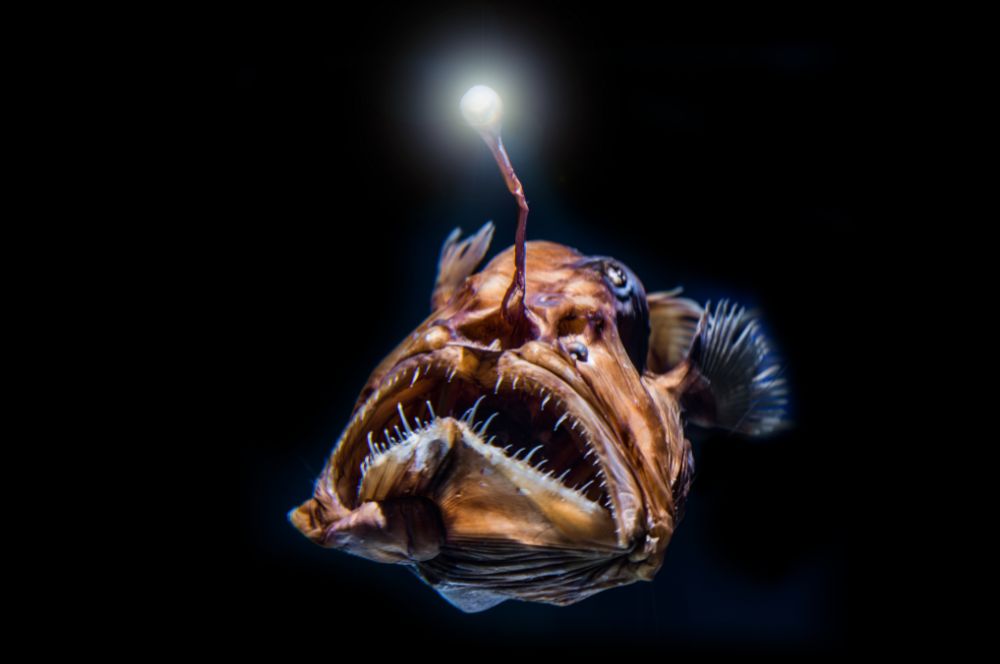
Exploring the Abyss: Unveiling the Mysteries of the Deep
Welcome, fellow ocean enthusiasts and curious minds! In this fascinating article, we'll take you on a journey to explore the mysteries of the deep sea through the lens of "Exploring the Abyss." To embark on this adventure, we must first delve into the unknown secrets of the abyss – the uncharted waters beyond the sunlit zone. Get ready to dive into the depths of our planet's most enigmatic realm as we unravel its wonders and challenges under the headings "Defining the Abyss", "The Enigma of the Abyss", and "The Allure of the Abyss".
Defining the Abyss takes us on a deep dive into what constitutes the abyss, as we venture far below the ocean's sunlit surface. We'll uncover the unique characteristics that define this mysterious world, as we delve into its extreme depths, pressure, and darkness. We'll also discuss the various zones that make up the deep ocean, giving you a clear understanding of where the abyss lies in the grand scheme of our planet's aquatic ecosystems.
In The Enigma of the Abyss, we'll explore the captivating mysteries that have puzzled scientists and divers for decades. From bizarre creatures to unique geological formations, this section offers a glimpse into the otherworldly beauty and surprises of the abyss. We'll also touch on the challenges researchers and adventurers face as they attempt to study and navigate this incredible environment.
Lastly, The Allure of the Abyss invites you to join us in appreciating the irresistible pull of the deep sea. Diving into the social aspect, we'll share stories of those who have ventured into the abyss and how their experiences have shaped their lives. This section will also highlight the abyss's critical role in our global ecosystem and the importance of its conservation.
So, come along and dive with us into the uncharted waters of the abyss, where we'll discover the unknown secrets and marvels beneath the ocean's surface. Together, let's unlock the true beauty of the underwater world while preserving its delicate ecosystem. Adventure awaits!
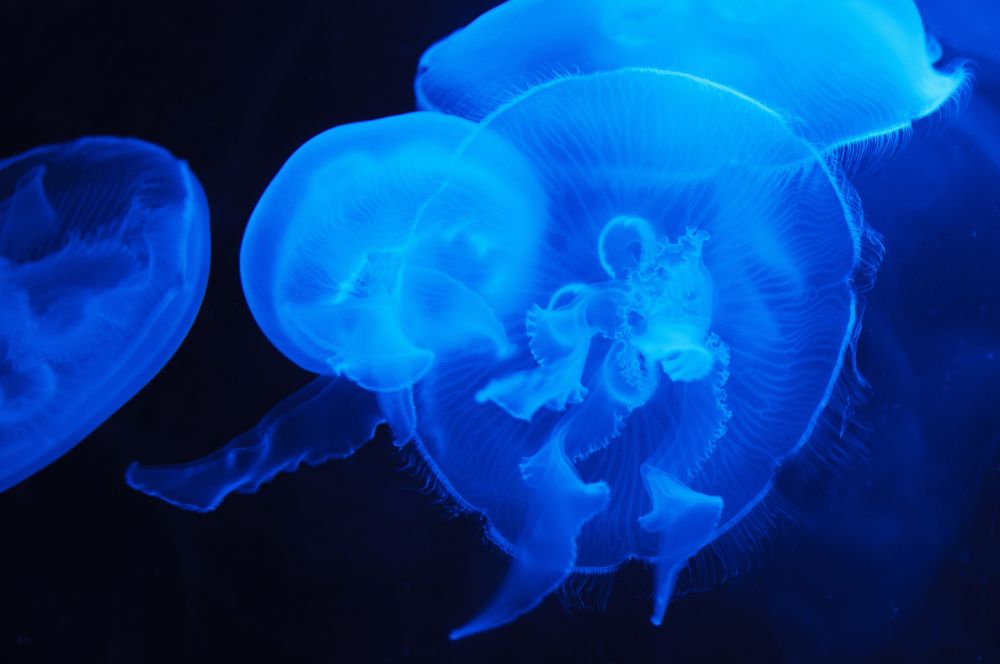
A Hidden Paradise: Breathtaking Biodiversity in the Abyss
The Abyss is one of the most mysterious and fascinating places on Earth. It is an environment usually described as dark, cold, and hostile. But despite this, it is also an ecological marvel, home to a vast array of species.
The abyssal environment has unique characteristics that make it a special place for life to thrive. The lack of sunlight means that there are no producers in the food chain, so instead, the ecosystem depends on dead organisms from the upper zones sinking to the seafloor. This creates a unique lifestyle for creatures living in the abyss, which have adapted to survive in extreme conditions.
The biodiversity in the abyss is breathtaking. It's home to a vast range of species, including both flora and fauna. Some of these creatures have unique adaptations that allow them to survive in such extreme conditions; for example, some fish have developed bioluminescent organs that help them find prey or attract mates in the darkness of the deep sea.
One creature worth mentioning is the giant squid (Architeuthis dux). This species has adapted to live in deep waters by having large eyes sensitive enough to detect light at depths where sunlight doesn't penetrate. They also have two long tentacles with suckers lined with sharp teeth-like structures, which they use to catch their prey.
Life thrives even in extreme conditions like those found in the abyssal zone, thanks to astonishing adaptation mechanisms developed by creatures over millions of years of evolution. This makes it an ecological marvel and a hub of biodiversity worth exploring and protecting for future generations.

A Hidden Paradise: Breathtaking Biodiversity in the Abyss
Unveiling the mysteries of the abyss is an exciting and vital endeavour that has far-reaching implications for our understanding of the natural world. Exploring the deep sea allows us to discover new species, unravel the complexities of ocean circulation, and gain valuable insights into the effects of climate change on marine ecosystems. As we delve deeper into this enigmatic realm, each discovery brings us closer to unlocking the secrets hidden in the ocean's depths.
Scientific exploration of the abyss has led to numerous groundbreaking discoveries that have expanded our knowledge of deep-sea life and environments. Researchers have uncovered a plethora of unique creatures, such as the elusive giant squid, which was once thought to be a creature of myth. Another fascinating discovery is the existence of hydrothermal vents – underwater geysers that spew superheated water, minerals, and chemicals – home to vibrant and specialized ecosystems. These findings pique our curiosity and enhance our understanding of the complex interactions between organisms and their environment in the abyssal zone.
The technological innovations that have emerged in recent years have been crucial for deep-sea exploration. Advances in remotely operated vehicles (ROVs) and autonomous underwater vehicles (AUVs) have allowed scientists to venture farther and deeper than ever, capturing stunning images and collecting valuable data from previously unexplored regions. Additionally, the development of sophisticated sensors and sampling equipment enables researchers to gather more accurate and comprehensive information about the deep sea, shedding light on the intricate workings of this mysterious world.
Unveiling abyssal discoveries is an essential undertaking that helps us appreciate the vastness and complexity of our planet's oceans. Through scientific exploration and technological innovation, we continue to make remarkable strides in understanding the deep sea, uncovering its marvels, and protecting its fragile ecosystems for future generations.
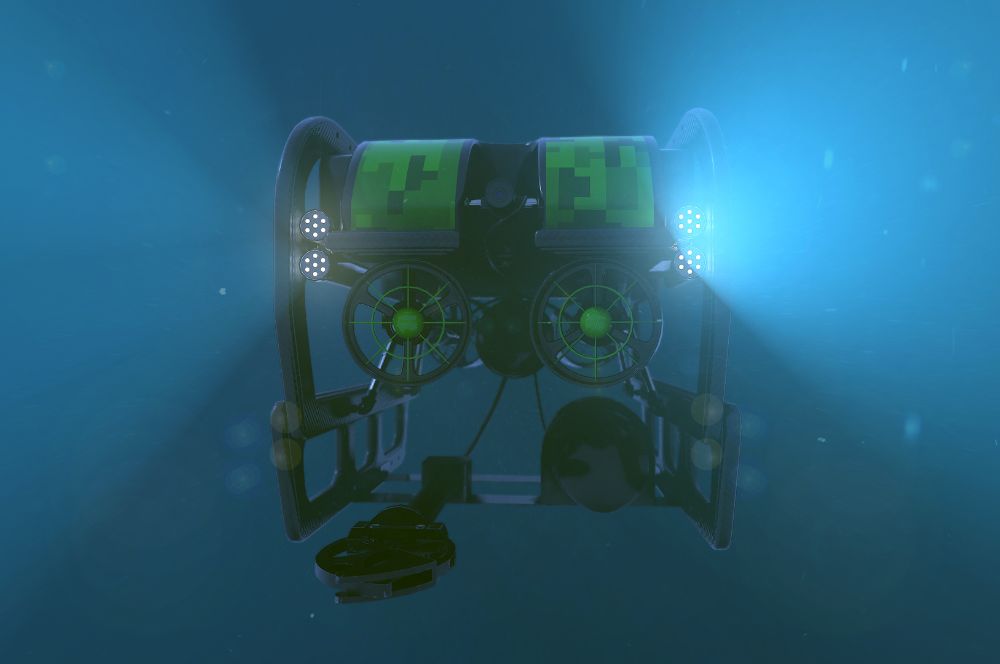
The Fragile Abyss: Environmental Challenges and Threats
Our oceans, including the mysterious abyss, face many environmental challenges that threaten the health and biodiversity of these unique ecosystems. Plastic pollution is one such issue, with millions of tons of plastic waste entering our oceans yearly. This waste poses a significant threat to marine life and affects the food chain, as organisms ingest microplastics and eventually make their way onto our plates.
Overfishing is another critical challenge facing the world's oceans. As demand for seafood continues to rise, many fish populations are being pushed to the brink of collapse. This unsustainable practice depletes vital resources and disrupts the delicate balance of marine ecosystems.
Ocean acidification, a result of increased carbon dioxide emissions, is yet another pressing concern. As the ocean absorbs more CO2 from the atmosphere, its pH levels decrease, leading to a more acidic environment. This change can have devastating effects on marine life, particularly on shell-forming organisms and coral reefs.
Coral bleaching, often linked to rising sea temperatures and ocean acidification, further endangers the health of our oceans. When corals become stressed, they expel the algae that provide them with essential nutrients, turning them white and leaving them vulnerable to disease and death.
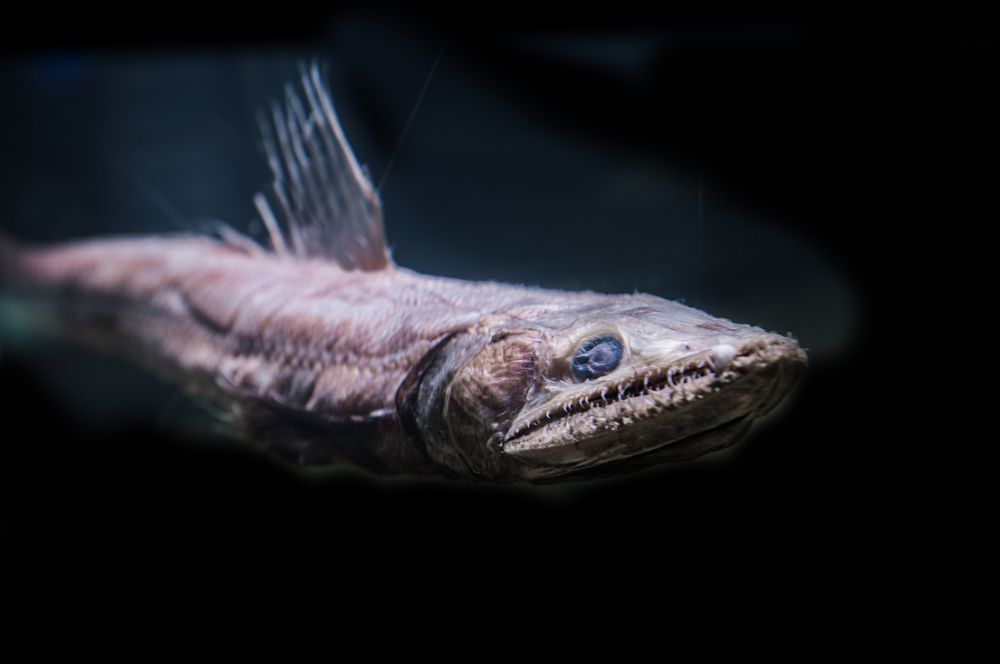
Preserving the Deep: Conservation Initiatives and Policies
In response to these challenges, governments and organizations worldwide are taking action to protect our oceans and promote sustainability. One notable example is establishing marine protected areas (MPAs), where human activities like fishing and resource extraction are restricted, allowing ecosystems to recover and thrive.
International agreements, such as the United Nations Convention on the Law of the Sea, provide a legal framework for the conservation and sustainable use of marine resources. These agreements encourage cooperation among nations and promote the development of policies that protect the health and biodiversity of our oceans.
Efforts like the Global Ocean Commission and the Deep Sea Conservation Coalition focus specifically on conserving deep-sea ecosystems. By raising awareness, advocating for policy changes, and supporting research, these organizations aim to safeguard the fragile abyss and its unique inhabitants.
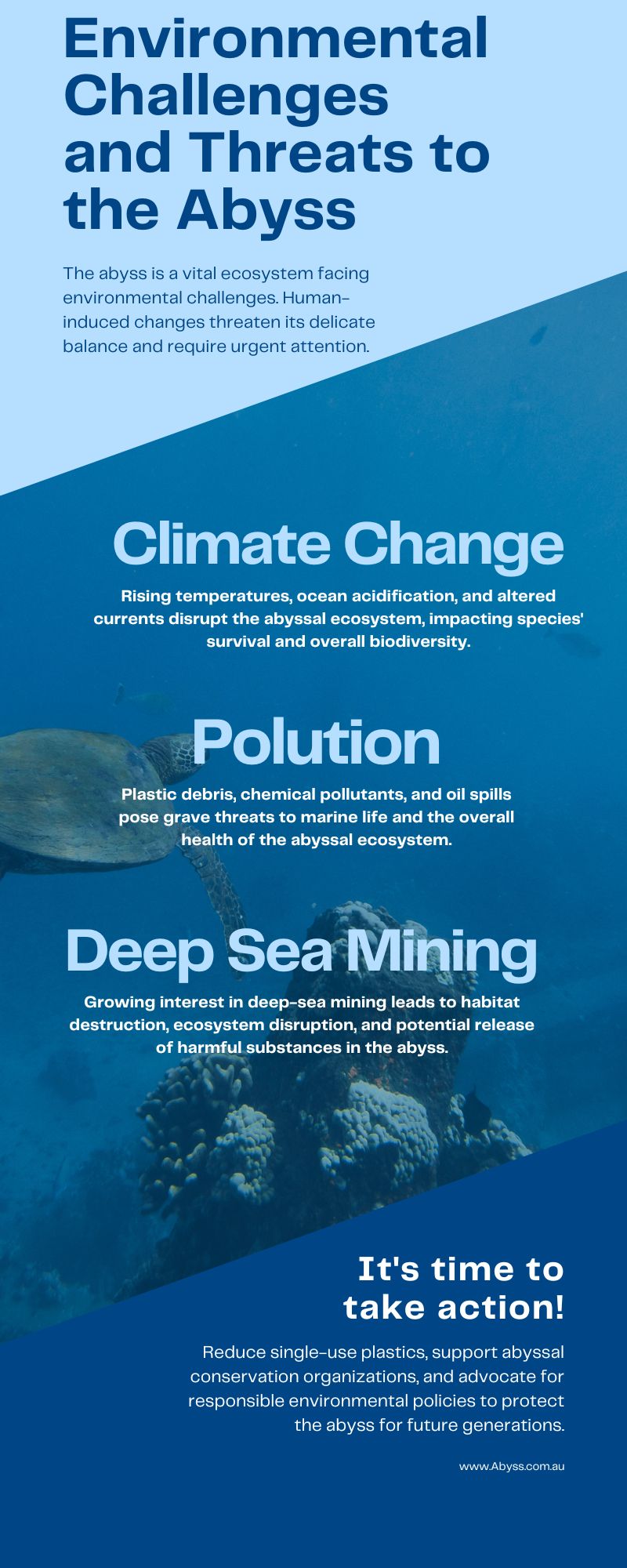
Tales from the Abyss: Captivating Stories of Exploration
Exploring the abyss is a thrilling journey that has captivated people for centuries. From legendary explorers to modern-day adventurers, many have ventured into the ocean's depths in search of knowledge and discovery.
One of the most renowned deep-sea explorers was Jacques Cousteau, who pioneered deep-sea exploration with his groundbreaking inventions and discoveries. He made numerous expeditions to the abyss, uncovering new species and uncovering mysteries of the deep. His stories captivated audiences worldwide, inspiring generations to explore and learn about our oceans.
Another famous explorer is Don Walsh, who made history when he became one of only two people ever to reach the deepest part of the ocean - Challenger Deep in Mariana Trench - with his partner Jacques Piccard in 1960. The expedition was a remarkable feat that pushed boundaries and revealed secrets about our planet's depths.
Modern-day explorers are also making incredible discoveries in the abyss. For example, researchers from NOAA recently embarked on an expedition called Estuary to Abyss Expedition (E2A), which explored 13 sites along America’s Atlantic Coast from estuaries to abyssal plains. During this expedition, they encountered fascinating creatures such as sea stars and jellyfish, while also discovering new species never seen before!
Exploring the abyss can be a spine-tingling experience, full of mystery and adventure! It is important to remember that these expeditions are exciting and educational; they help us understand more about our planet’s oceans and inhabitants. We must continue to explore and discover more about our oceans if we want to protect them for future generations.

By shedding light on the mysteries of the abyss, we not only satisfy our curiosity but also gain a deeper appreciation for the delicate balance of our planet's ecosystems. Through scientific exploration and research, we uncover invaluable insights into the evolution of life itself and the potential for future advancements in various fields.
However, as we venture further into the abyss, we must remain mindful of the environmental challenges threatening its fragile existence. Climate change, pollution, and deep-sea mining pose significant risks to this unique ecosystem. Our collective responsibility is to prioritize conservation efforts, establish protective measures, and promote sustainable practices to ensure the long-term preservation of the abyss for generations to come.
Whether it is the tales of legendary explorers or the captivating stories of present-day adventurers, the abyss continues to captivate our imagination and inspire a sense of awe. Its allure reaches far beyond the scuba diving industry, drawing the attention of individuals from diverse backgrounds who yearn to witness the extraordinary wonders beneath the surface.
So, let us embrace the call of the abyss, venturing into its depths with reverence and curiosity. Together, we can continue to unveil its mysteries, raise awareness about its significance, and forge a path towards a future where the abyss and its inhabitants thrive in harmony with our planet. Join us on this remarkable journey of exploration, and together, let us celebrate the majestic beauty of the abyss.
Recent Posts




